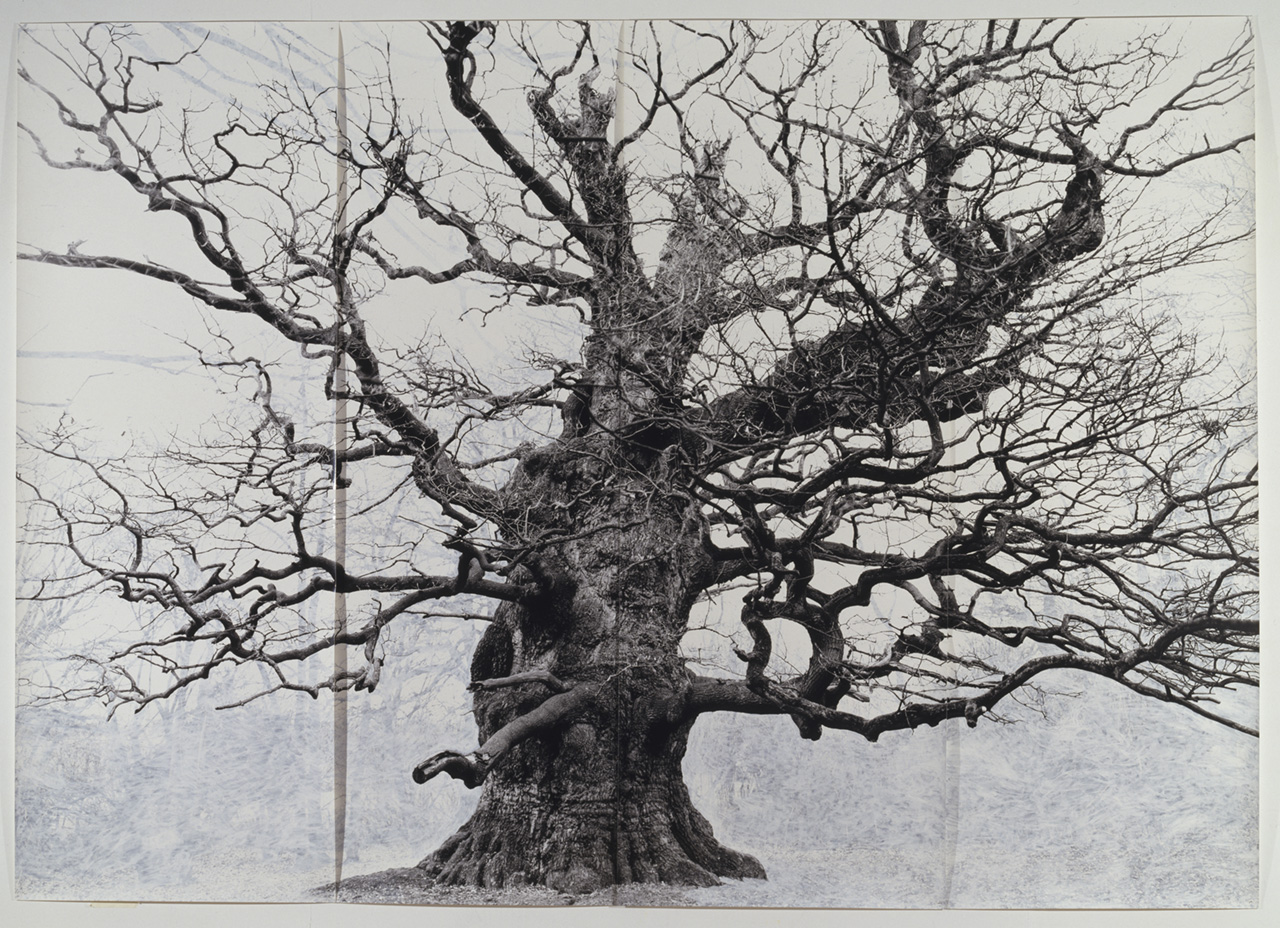The radical rural
A new exhibition in Liverpool invites us to look at the natural landscape in a different way to the traditionally pastoral
A monumental overpainted photograph of an ancient oak tree stands proudly in a city centre gallery. Held as sacred by many cultures, the tree symbolises the passage of time and is an emblem of endurance and strength, both poetic and anthropomorPihc.
“At the same time,” says Tate Liverpool curator Darren Pih, “many of the most ancient oak trees in Britain have been protected or conserved either by being located in public or national parks, or even by being enclosed within private land.”
The photo, Tacita Dean’s Majesty (2006), is a highlight of new exhibition Radical Landscapes. It includes 150 examples of landscape art spanning a century and reveals a social and cultural history of Britain through the themes of trespass, land use and the climate emergency.
“It explores how art can be made in and of the land, rather than by viewing it as a constructed ‘scape,’” says assistant curator Laura Bruni. “JMW Turner and John Constable famously elevated the genre of British landscape painting, a position it has retained ever since. The artists in this show critically engage with this tradition and challenge it. For example, the conventions of landscape art can also express the status of land ownership, themes of exclusion, or control over nature.”
Key works illustrating Britain’s landscape histories include Cerne Abbas (2019) by Jeremy Deller and Oceans Apart (1989) by Ingrid Pollard. Ideas about collective activism can be seen in works such as the Greenham Common Women’s Peace Camp banners by Thalia Campbell and video installations by Tina Keane, which appear in a room dedicated to this peaceful protest movement of the 1980s and 1990s. Pih says Greenham Common is an example of artists reclaiming the landscape.
“During the 1980s, it was an American base for holding nuclear missiles at the height of the Cold War. It transformed a rural area into a site of conflict. The establishment of the Women’s Peace Camp remains a powerful act of peaceful protest, and key to campaigns about how land is used and accessed.”
The most recent work in the exhibition is a new commission by Davinia-Ann Robinson, whose practice explores the relationship between the soil conservation practices of black, brown and indigenous people and what she terms “colonial nature environments”.
Also expanding on the traditional, picturesque portrayal of the landscape is art that reflects the diversity of Britain and its communities. Other works reflect on shared customs, myths and rituals, and reveal how the countryside has been shaped by our values and use of the land. All this combines to ask visitors to reconsider landscape art as a progressive genre, exploring ideas of freedom, mysticism, experimentation and rebellion.
Another highlight is Ruth Ewan’s Back to the Fields (2015-22), an immersive installation of plants, farming tools and the fruits of the land. Bruni says it’s a personal favourite.
“Back to the Fields brings the revolutionary life of the land into the heart of the exhibition. It’s essentially a large-scale immersive installation in the form of a living calendar and was used during the French Revolution. The days of the year are replaced with trees, flowers, herbs, geological specimens and farming tools, all linked to the turning of the seasons. It symbolises the resetting of time, the end of feudalism and the return of the land to the rural workers.”
It’s difficult to consider landscape art without now considering the climate emergency too. Radical Landscapes does that with works including Gustav Metzger’s Liquid Crystal Environment (1965, remade 2005) and Yuri Pattison’s Sun[set] Provisioning (2019).
A public programme of accompanying events will take place online, throughout the gallery, across the city and beyond in the great outdoors throughout the summer. There’s also a related book being published with contributions by writers, campaigners, naturalists, environmentalists and social historians.
“The book shows the breadth and diversity of perspectives in modern Britain and explores further the artists’ relationship to the landscape and social history,” says Pih. “It shows how it’s a stimulus for the imagination as much as action and protest.”
Radical Landcapes is at Tate Liverpool from 5 May to 4 September (tate.org.uk/liverpool)

Leave a reply
Your email address will not be published.